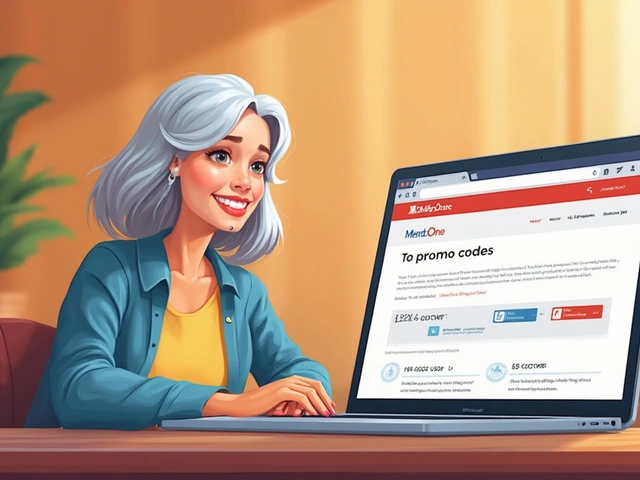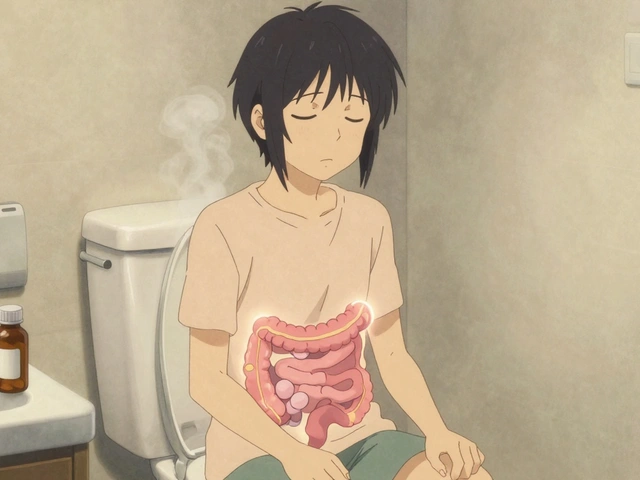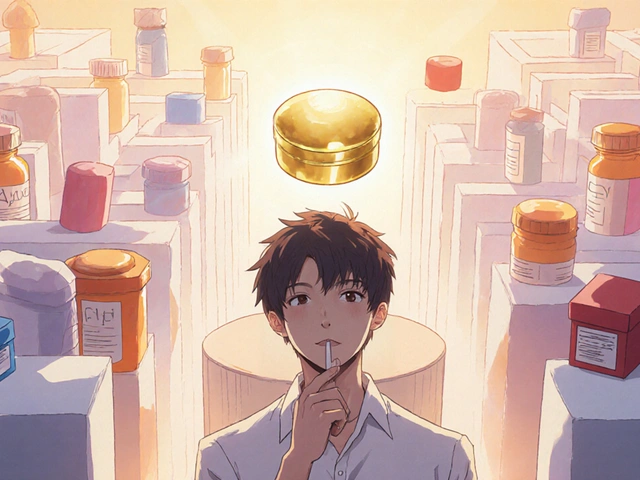What Is a Paragraph IV Certification?
A Paragraph IV certification is a legal tool used by generic drug makers to challenge patents on brand-name medications before they even start selling their version. It’s part of the Abbreviated New Drug Application (ANDA) process, created by the Hatch-Waxman Act of 1984. This law was designed to balance two goals: letting generic drugs reach the market faster to lower prices, while still protecting the original drugmakers’ patents.
Here’s how it works: When a generic company files an ANDA, they must check the FDA’s Orange Book - a public list of all patents tied to a brand drug. If they believe a patent is invalid, unenforceable, or won’t be infringed by their product, they file a Paragraph IV certification. That’s not just a claim - it’s a formal legal notice that says, “We’re going to make this drug, and we’re ready to fight for it.”
Why Does This Matter?
Most industries wait until a product hits the market before suing over patents. If someone copies your toaster design, you sue after they start selling it. But in pharma, the rules are flipped. The moment a generic company files a Paragraph IV certification, the law treats it as an “artificial act of infringement.” That means the brand-name company can sue immediately - even if no generic drug has been made or sold yet.
This sounds strange, but it solves a real problem. Without this rule, generic companies would have to risk launching their drug, only to face massive lawsuits and financial penalties later. Brand companies, on the other hand, would have to wait until their sales dropped before taking legal action. Paragraph IV creates a clear, timed battlefield where both sides know exactly when the fight starts.
The 20-Day Notice and the 45-Day Clock
After filing the ANDA with the FDA, the generic company has exactly 20 days to send a written notice to the brand-name drugmaker and the patent holder. This notice isn’t a friendly heads-up - it’s a legal document that lays out the reasons why they believe the patent doesn’t hold up. It includes technical arguments about how their drug is different, or why the patent is too broad or obvious.
Once that notice is sent, the brand company has just 45 days to file a patent infringement lawsuit. If they do, the FDA automatically puts a 30-month stay on approving the generic drug. That means even if the generic is ready to go, it can’t hit shelves until either:
- The court rules in favor of the generic (patent is invalid or not infringed),
- The 30 months run out, or
- The brand company drops the lawsuit.
These deadlines aren’t suggestions. Missing the 20-day window or letting the 45-day clock expire changes everything. If the brand doesn’t sue in time, the generic can launch without delay - and without fear of litigation.
The 180-Day Exclusivity Prize
Here’s the big incentive: the first generic company to successfully file a Paragraph IV certification gets 180 days of exclusive market access. No other generics can enter during that time. That’s a massive advantage. For a blockbuster drug like Humira or Eliquis, which brings in billions per year, those 180 days can mean hundreds of millions in profit.
In 2023 alone, first-filers earned $4.7 billion from this exclusivity period. That’s why companies like Teva, Mylan, and Sandoz spend millions on legal teams just to be the first to file. But it’s not a guaranteed win. If multiple generics file on the same day, they can share the exclusivity - or fight over it in court. And if the first filer doesn’t launch within 75 days of winning the case, they lose the exclusivity.

How Brands Fight Back: Patent Thickets and Pay-for-Delay
Brand-name companies aren’t sitting still. Since 2005, the average number of patents listed for a single drug has jumped from 7.2 to 17.3. That’s called a “patent thicket.” Instead of one patent, they pile on dozens - covering everything from the chemical structure to how the pill is coated, even minor uses of the drug.
Each patent must be challenged individually. So if a generic wants to launch, they might need to file three or four Paragraph IV certifications against the same drug. That raises legal costs to an average of $12.3 million per challenge.
Another tactic? “Pay-for-delay” deals. Sometimes, the brand company offers the generic maker a cash payment - often over $180 million - to delay their launch. In 2024, 68% of Paragraph IV settlements included these payments. The FTC has been cracking down, filing 17 lawsuits in 2023-2024 to stop these deals. But they still happen, and they delay generic access by nearly two and a half years on average.
Carve-Outs and Skinny Labels: Launching Without Breaking Patents
Not every generic needs to challenge every patent. Sometimes, they use a clever workaround called a “Section viii carve-out.”
Imagine a drug approved for three conditions: arthritis, diabetes, and migraines. But the patent only covers its use for migraines. The generic company can still launch their version - but only for arthritis and diabetes. They leave the migraine use off the label. That’s called a “skinny label.”
According to the West Health Institute, 37% of Paragraph IV filings involve carve-outs. It’s a legal gray zone, but courts have consistently upheld it. It lets generics enter the market faster without touching protected uses. For patients, it means cheaper drugs for some conditions - even if the full version isn’t available yet.
Who’s Winning? Who’s Losing?
Since 2020, generic companies have won 58% of Paragraph IV cases - up from 41% in the previous 16 years. Why? Courts have become more skeptical of overly broad patents. The Supreme Court has ruled against patents on naturally occurring gene sequences and obvious modifications. That’s opened the door for generics.
Big players are stepping up. In 2024, Teva filed 147 Paragraph IV certifications - more than any other company. Mylan and Sandoz followed closely. The drugs under the most attack? AbbVie’s Humira (28 challenges), Eli Lilly’s Trulicity (24), and Pfizer’s Eliquis (21).
Meanwhile, consumers are saving big. Since 1984, Paragraph IV challenges have saved U.S. patients over $2.2 trillion. In 2024 alone, that number hit $192 billion in annual savings.
But the cost is high. Generic companies spend an average of $12.3 million per challenge, and cases take nearly 29 months to resolve. Many small firms can’t afford it. That’s why only about 10 companies handle 80% of all filings.

What’s Next?
The FDA is pushing for change. In October 2022, they updated rules to stop companies from changing their Paragraph IV certifications after a court ruling - a tactic some used to “shop” for better outcomes. Now, if a patent is found valid, the generic can’t just tweak their application and try again.
In 2026, the FDA plans to require brand companies to justify every patent they list in the Orange Book. Analysts believe this could cut patent thickets by 30-40%. That would make it easier and cheaper for generics to challenge.
The FTC is also stepping up. Their 2025 plan targets pay-for-delay deals with more lawsuits. If they succeed, generics could enter the market 4-6 months sooner on average.
Even with these hurdles, Paragraph IV certifications remain the most powerful tool for bringing down drug prices. As long as brand companies keep filing patents, generics will keep challenging them - because the stakes are too high to walk away.
How Long Does It Take?
From filing to market, the process usually takes 2 to 4 years. But it’s not linear. The 30-month stay often stretches to 36 months due to court delays. Some companies take the risk and launch “at-risk” - meaning they start selling before the court decides. In 2024, 22% of challengers did this. If they win, they keep the profits. If they lose, they pay damages - sometimes over $200 million.
Is This Fair?
It’s a system built on tension. Brand companies argue they need patent protection to recoup the $2.6 billion it costs to develop a new drug. Generics say the system is being abused to block competition. The courts are trying to find balance - and so far, they’re leaning toward generics. But the fight isn’t over. As long as drugs cost thousands per year, the pressure to challenge patents will only grow.
What is the Hatch-Waxman Act?
The Hatch-Waxman Act, passed in 1984, created a legal framework that lets generic drug companies get FDA approval faster by relying on the brand-name drug’s safety data. In exchange, it gives brand companies extra patent protection. It also established the Paragraph IV certification process, which allows generics to challenge patents before launch - a key part of how low-cost drugs reach the market.
Can a generic drug be approved without a Paragraph IV certification?
Yes. If a drug has no patents listed in the Orange Book, or if all patents have expired, the generic company can file an ANDA without a Paragraph IV certification. They simply state that no patents are listed or that the patents have expired. That’s the easiest path to approval - but it only applies to older drugs.
Why do brand companies list so many patents?
Each patent listed in the Orange Book triggers a 30-month stay if challenged. By listing 15-20 patents - covering everything from chemical formulas to packaging - brand companies can delay generic entry for years. This practice, called patent thicketing, makes it expensive and time-consuming for generics to win in court.
What happens if the generic wins the lawsuit?
If a court rules that the patent is invalid or not infringed, the FDA can immediately approve the generic drug. The first filer gets 180 days of exclusivity, during which no other generics can enter. After that, the market opens up, and prices drop dramatically - often by 80-90%.
Do Paragraph IV challenges work for biologics?
No. The Hatch-Waxman Act only applies to small-molecule drugs. Biologics - complex drugs made from living cells - fall under a different law, the Biologics Price Competition and Innovation Act (BPCIA). That law doesn’t have a Paragraph IV equivalent, so biosimilar makers face a more complex and uncertain patent challenge process.
How do I know if a drug has been challenged with a Paragraph IV certification?
The FDA publishes a monthly list of all ANDAs with Paragraph IV certifications on its website. You can also find this information through commercial databases like Drug Patent Watch or Minesoft. These tools track filings, litigation status, and expected launch dates - useful for pharmacists, insurers, and patients watching for price drops.







Comments
Donald Frantz
This is the exact system that keeps insulin at $300 a vial while the manufacturer made $20B last year. The math doesn't lie. Patent thickets are just corporate extortion dressed up as innovation.
Sammy Williams
Honestly? I'm just glad someone's fighting back. My grandma's on Humira and we'd be broke without generics. This whole Paragraph IV thing is messy but necessary.
Julia Strothers
You think this is about drugs? Nah. This is Big Pharma's playbook to control the entire U.S. healthcare system. The FDA? The FTC? All bought and paid for. Pay-for-delay isn't a loophole-it's a cartel. And they're laughing all the way to the Swiss bank accounts.
Erika Sta. Maria
Wait so if the patent is for migraines but the drug works for arthritis too... then why can't we just use it for arthritis? Like... isn't that like saying you can't eat an apple because the orchard owns the tree? This whole system is so dumb it's almost poetic.
Nikhil Purohit
I'm from India and we've seen this play out with HIV meds. The same playbook-patent thickets, pay-for-delay, 30-month stays. It's global. But here’s the thing: without Paragraph IV, we wouldn’t have affordable HIV drugs in the Global South. This isn’t just US politics-it’s life or death.
Debanjan Banerjee
Let’s cut through the noise: the 180-day exclusivity period is the only reason any generic company bothers with $12M legal bills. Without it, no one would risk it. The system incentivizes the right behavior-competition-but it’s gamed by big players who game the timeline. The FDA’s 2026 rule change is the first real step toward fixing this.
Steve Harris
I’ve worked in pharma compliance for 18 years. The Paragraph IV process is the only legal mechanism that balances innovation and access. Yes, it’s messy. Yes, there are abuses. But the alternative? No generics for 20 years. That’s not innovation-that’s exploitation. The courts are getting smarter, and that’s good news.
Michael Marrale
You ever wonder why all the big generic makers are based in the U.S. and India? Coincidence? Or is someone controlling the supply chain? I mean... who owns the law firms that file these certifications? Who owns the patent databases? Who owns the FDA? Hmmmm...
David vaughan
I’ve been tracking ANDA filings since 2020... and honestly? The 58% win rate for generics is HUGE. It means courts are finally calling out lazy patents. That $2.2 trillion saved? That’s real. And the 22% who launch at-risk? Brave. Or stupid. Either way, they’re the ones forcing change.
Sheldon Bazinga
So let me get this straight-some guy in a suit files a patent on the color of a pill, then charges $10K a month for a drug that costs $2 to make? And we call this capitalism? Bro, this is feudalism with a corporate logo.
Sandi Moon
The Hatch-Waxman Act was a masterstroke of American legal engineering. But now, it has become a weaponized instrument of monopolistic control. The notion that a patent on a pill coating can delay market entry for three years is not merely absurd-it is a moral failure of the regulatory state.
Kartik Singhal
Bro, the real villain here isn’t Big Pharma-it’s the FDA. Why do they even let these patents get listed? It’s like letting a kid list every crayon color in the box as a copyright. And the 180-day exclusivity? That’s just a bribe to the first bully in line. 🤡
Chris Vere
People forget that without this system we’d still be paying $1000 for drugs that cost 50 cents to make. The system is broken but it’s still the best tool we have. Let’s fix it not break it
Pravin Manani
The carve-out mechanism is a brilliant workaround-essentially a patent-avoidance via therapeutic de-escalation. It leverages the doctrine of patent exhaustion and the FDA’s labeling autonomy. It’s not a loophole; it’s a statutory feature designed for precisely this kind of market efficiency. The courts have consistently affirmed this under the doctrine of implied license and non-infringing use.